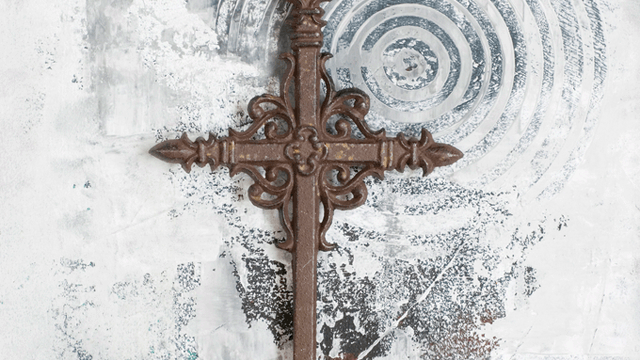
A Resurrection-Filled Life
He lives, He lives, Christ Jesus lives today! This line of the old hymn “He Lives” has radiated through house churches, cathedrals, urban and rural congregations, buses, back porches, busy streets, school rooms, and recital halls over time with one promise—our redeemer lives! If you are reading this article you most likely are doing so during the spring of the year surrounded by the commercialized views of bunny rabbits and chocolate eggs. You may even be reading this article while watching your grandchildren hunt for colored eggs amidst thick grass. But, Easter is more.
Christians can easily view Easter as an event on the calendar, which often gets a seasonal check mark, like other holidays. Sadly, for some, the meaning of Easter can be packed away in a box of decorations and stored until it shows up on the next year’s calendar. Then, there are those times, among religious groups, that Easter receives a little extra attention simply because of the theological debates ensuing discussion about these celebrations being either Christian or pagan. Of course there are those churches that celebrate a season of Lent leading up to the actual Easter Sunday. This observing of Lent is steeped in the more liturgical tradition of Christian worship. However, over time, others representing non-liturgical heritage groups also participate in Lent. The season of Lent usually begins on Ash Wednesday and culminates about six weeks later when celebrating Easter Sunday. Then, in many traditions, the celebration turns to remembrance of the real meaning of Easter. It appears that the observing and embracing the more liturgical view of Easter is mostly practiced by the traditional or trendy forms of Christianity and the challenge is to resist the urge to limit Easter as an event among many big events.
According to the earliest known records, when preparing for the event called Easter, the Church would fast the day before, in accordance with the already set tradition of Passover. This practice of fasting evolved into a forty-day fast in order for the event to coincide with those that were preparing themselves, through fasting and prayer, before their baptism. Since Christianity was to be the fulfillment of Judaism and not its replacement, Passover became a time of reflection of Christ’s sacrifice and was transformed into the celebration of the Paschal Lamb of God identified in John 1:29 as the one who takes away the sin of the world. The death and resurrection of Christ transcends time and provides deliverance from the power of sin and death for all that open their heart for this work of God to take place in their life. Following the fast and the celebration of Easter, the Church would continue the festivities up until the day of Pentecost.
The very idea of Easter should infuse every part of the Christian’s life. The Christian faith would be void of meaning without the Incarnation of God on earth. The life, death, and resurrection of Christ made and are still making it possible for humanity (you and me) to experience relationship with Deity (God, Jehovah, Almighty, Yahweh) moving us from sin to salvation. Without the resurrection, death would still strike fear in us. As noted in the writings of Saint John Chrysostom the nature of death changed entirely because the death of Jesus on the cross “took a body and met God face to face.” The death of Jesus was not a passive death or a mere sacrifice for our sins as a payment for a punishment that we deserved to receive. It was more. It was a painful and horrid death resulting in the very reconciliation of humanity with their Creator and the redemption of all and through the resurrection of Christ, was the total defeat of death and the giving of life in God.
Because of this victory over death, the Christian, the believer, the Christ follower, each has reason to celebrate Easter. All of life points back to the resurrection of Christ from the tomb. The very good news, as displayed in the Gospels, is that death has been defeated and now life is available for all.
As members of the company of the redeemed we must keep the message of hope and resurrection at the forefront of our minds our hearts and our conversations. Here are a few practical steps to keep Easter alive in you—every day.
First, resist making Easter a commercialized pagan experience.
Let’s be real. The little chocolate spotted bird eggs are delicious. Boiled eggs taste best when they are peeled away beneath the colored shell bearing the impressions of little fingers and thumbs. Easter is a great economy booster because of parents buying new outfits to replace the one their child wore last year.
Don’t forget about the basket holding the little baby bunny rabbit that will soon be set aside or passed down to another because the next big event is approaching.
Easter is more! Easter bares the truth that He, the risen Jesus, lives and that because he lives, we too can have eternal life. “If the Spirit of him who raised Jesus from the dead dwells in you, he who raised Christ Jesus from the dead will also give life to your mortal bodies through his Spirit who dwells in you” (Romans 8:11 ESV).
Second, speak of the resurrection of Jesus Christ daily.
If you have ever been the recipient of a miracle, you probably talk about that miracle often. Each of us, because of the work of Jesus on the cross and the resurrection, are able to be participants in the miraculous journey from death to life. Therefore, it is our responsibility to keep this story of Jesus’ death and resurrection alive [daily] rather than as mere holiday celebrations on a calendar of events. Remember without fail, “He is not here, but has risen…” (Luke 24:6 ESV).
Third, become a student of God’s word.
Guard against deception. One of the best ways to know the counterfeit is to study the real. Then, when the fake is evident the real are not deceived. Guard against being swayed into a lethargic approach to scripture, which can result, into cycles of defeat. The cross of Jesus paid a price we could not pay and the resurrection of Jesus occurred to defeat the cycle of sin. “For Christ also suffered once for sins, the righteous for the unrighteous, that he might bring us to God, being put to death in the flesh but made alive in the spirit” (1 Peter 3:18 ESV).
Fourth, be the incarnation of Christ to your world.
The term incarnation emerged among theological discussions to illustrate that Jesus took on the form of human flesh as noted in John 1:14 “And the Word became flesh and dwelt among us, and we have seen his glory, glory as of the only Son from the Father, full of grace and truth” (ESV). Jesus was both divine and human. He was both God and man. He came to earth in flesh while maintaining His place in Heaven. Jesus in the flesh was the accurate depiction of God to the world. While we (humanity) are not divine we do have the responsibility to be the accurate reflection of Jesus to the world. In a sense, we are the incarnation of Jesus to our world. Reflect Him well.
Utilizing these four aforementioned steps and a plethora of early Christianity traditions, it is possible for church leaders to raise awareness of Easter while promoting the need for every day encounters between God and us. This is the real message of Easter!
Matthews-Green, Frederica. (2003). The open door: Entering the sanctuary of icons and prayer. Brewer, Mass.: Paraclete Press. pg. 72. Print.




No Comments